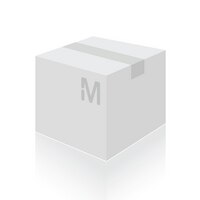625725 Sigma-AldrichPhosphoDetect™ Anti-TrkA (pTyr⁴⁹⁰) Rabbit pAb
This PhosphoDetect™ Anti-TrkA (pTyr⁴⁹⁰) Rabbit pAb is validated for use in Immunoblotting, Immunoprecipitation for the detection of TrkA (pTyr⁴⁹⁰).
More>> This PhosphoDetect™ Anti-TrkA (pTyr⁴⁹⁰) Rabbit pAb is validated for use in Immunoblotting, Immunoprecipitation for the detection of TrkA (pTyr⁴⁹⁰). Less<<Produits recommandés
Aperçu
| Replacement Information |
|---|
Tableau de caractéristiques principal
| Host |
|---|
| Rb |
| Product Information | |
|---|---|
| Form | Liquid |
| Formulation | In 150 mM NaCl, 10 mM HEPES, 50% glycerol, pH 7.5. |
| Physicochemical Information |
|---|
| Dimensions |
|---|
| Materials Information |
|---|
| Toxicological Information |
|---|
| Safety Information according to GHS |
|---|
| Safety Information |
|---|
| Product Usage Statements |
|---|
| Packaging Information |
|---|
| Transport Information |
|---|
| Supplemental Information |
|---|
| Specifications |
|---|
| Global Trade Item Number | |
|---|---|
| Référence | GTIN |
| 625725 | 0 |
Documentation
PhosphoDetect™ Anti-TrkA (pTyr⁴⁹⁰) Rabbit pAb FDS
| Titre |
|---|
PhosphoDetect™ Anti-TrkA (pTyr⁴⁹⁰) Rabbit pAb Certificats d'analyse
| Titre | Numéro de lot |
|---|---|
| 625725 |
Références bibliographiques
| Aperçu de la référence bibliographique |
|---|
| Segal, R.A., and Greenberg, M.E. 1996. Annu. Rev. Neurosci. 19, 463. Yao, R. and Cooper, G.M. 1995. Science 267, 2003. Obermeier, A., et al. 1994. EMBO J. 13, 1585. Stephens, R.M., et al. 1994. Neuron 12, 691. |







